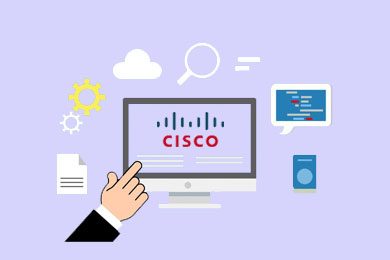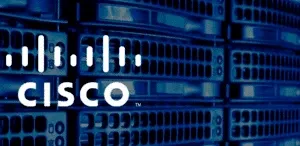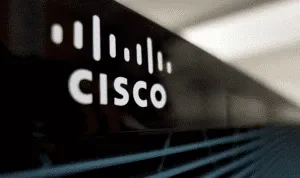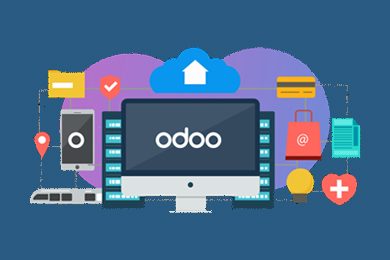This plan includes
- Limited free courses access
- Play & Pause Course Videos
- Video Recorded Lectures
- Learn on Mobile/PC/Tablet
- Quizzes and Real Projects
- Lifetime Course Certificate
- Email & Chat Support
What you'll learn?
- Implement NGFW modes
- Implement NGIPS modes
- Implement high availability options
- Configure system settings in Cisco Firepower Management Center
- Configure these policies in Cisco Firepower Management Center
- Configure these features using Cisco Firepower Management Center
- Configure devices using Firepower Management Center
- Firepower initial bootstrap and setup
- Configure and verify site-to-site VPN and remote access VPN
- Implement segmentation, access control policies, AVC, URL filtering
- All Next Generation Features
Course Overview
Pre-requisites
- Basic IP and security knowledge is nice to have.
- Students need to understand basic networking.
- CCNA routing and Switching Knowledge.
- Students needs to understand Networking Fundamentals.
- CCNA Security or Equivalent.
Target Audience
- Course has been designed for anyone who wants to start learning NGFW
- This course is for students trying to learn the CCNP Security
- Any Network or Security Engineer want to learn or polish their Skills.
- Network and Security Engineers
Curriculum 98 Lectures
Section 1 : Section 1
- Lecture 2 :
- Introduction and Concept of Cisco Firepower.
- Lecture 3 :
- Install and Add Cisco FTD 6.2.3-83 on EVE NG.
- Lecture 4 :
- Install and Add Cisco FMC 6.2.3-83 on EVE NG.
- Lecture 5 :
- Introduction to FDM (Firepower Device Manager).
- Lecture 6 :
- Configure and Setup Cisco FTD Lab for FDM Access.
- Lecture 7 :
- Configure and Verify Cisco FTD Using FDM Lab.
- Lecture 8 :
- Firepower Device Manager Main Page walkthrough.
- Lecture 9 :
- FDM, System Settings, Management Access List.
- Lecture 10 :
- FDM, System Settings, Diagnostic Logging.
Section 2 : Section 2
- Lecture 1 :
- FDM, System Settings, DHCP Server Configuration.
- Lecture 2 :
- FDM, System Settings, DNS Server Configuration.
- Lecture 3 :
- FDM, System Settings, Management Interface.
- Lecture 4 :
- FDM, System Settings, Device Hostname Configuration.
- Lecture 5 :
- FDM, System Settings, Network Time Protocol NTP.
- Lecture 6 :
- FDM, System Settings, HTTP Proxy Configuration.
- Lecture 7 :
- FDM, System Settings, Web Analytics Settings.
- Lecture 8 :
- FDM, System Settings, Reboot or Shutting Down.
- Lecture 9 :
- FDM, System Settings, URL Filtering Settings.
- Lecture 10 :
- FDM, Top Upper Right Conner Menu Walkthrough.
Section 3 : Section 3
- Lecture 1 :
- Configure & Verify Objects Firepower Device Manager.
- Lecture 2 :
- Configure and Verify ACP Firepower Device Manager.
- Lecture 3 :
- FDM, Introduction & Walkhrough Monitoring Dashboards.
- Lecture 4 :
- FDM, Configure and Verify Main Page Device Groups.
- Lecture 5 :
- Configure and Setup Cisco FTD Lab for FMC Access.
- Lecture 6 :
- Firepower Threat Defense First Time Configuration.
- Lecture 7 :
- Firepower Management Center First Time Configuration.
- Lecture 8 :
- Activate Smart License Evaluation Mode in Cisco FMC.
- Lecture 9 :
- Register and Verify Cisco FTD Firewall to Cisco FMC.
- Lecture 10 :
- Cisco FTD Initial Working Lab Using the Cisco FMC.
Section 4 : Section 4
- Lecture 1 :
- Cisco Firepower Management Center (FMC) Main Menu.
- Lecture 2 :
- Deploy Configuration and Message Center Details.
- Lecture 3 :
- Configure and Verify System Settings In Cisco FMC.
- Lecture 4 :
- Introduction and Concept of Access Control Policies.
- Lecture 5 :
- Configure and Verify HTTP Responses Pages in FMC.
- Lecture 6 :
- Introduction and Concept of URL Filtering in FTD.
- Lecture 7 :
- Configure and Verify Custom URLs Object Filtering.
- Lecture 8 :
- Configure and Verify URL and Web Category Filtering.
- Lecture 9 :
- Introduction and Concept of Security Intellignece.
- Lecture 10 :
- Configure and Verify Security Intelligence SI Lab.
Section 5 : Section 5
- Lecture 1 :
- Security Intelligence Custom Blacklist & Whitelist.
- Lecture 2 :
- Security Intelligence Global Blacklist & Whitelist.
- Lecture 3 :
- Introduction and Concept of DNS Policy in Cisco FTD.
- Lecture 4 :
- Configure and Verify Domain Name System (DNS) Policy.
- Lecture 5 :
- Introduction and Concept of Pre-Filtering Policy FTD.
- Lecture 6 :
- Configure and Verify Pre-Filtering Policy in FTD Lab.
- Lecture 7 :
- Introduction and Concept of SSL Decryption Policy FTD.
- Lecture 8 :
- Configure and Verify SSL Decryption Policy FTD Lab.
- Lecture 9 :
- Introduction and Concept of Malware & File Policy.
- Lecture 10 :
- Configure and Verify Malware and File Policy Lab.
Section 6 : Section 6
- Lecture 1 :
- Introduction and Concept of Network Discovery Policy.
- Lecture 2 :
- Configure and Verify Network Discovery Policy Lab.
- Lecture 3 :
- Introduction, Theory and Concept of Intrusion Policy.
- Lecture 4 :
- Introduction and Theory of Intrusion Policy Main Page.
- Lecture 5 :
- Configure & Verify Variable Set for Intrusion Policy.
- Lecture 6 :
- Configure and Verify Intrusion Policy in Cisco FTD Lab.
- Lecture 7 :
- Configure and Verify Custom Intrusion Rule in Cisco FTD.
- Lecture 8 :
- Introduction, Theory and Concept of NAT and PAT in FTD.
- Lecture 9 :
- Configure & Verify Manual/Auto Static NAT in Cisco FTD.
- Lecture 10 :
- Configure & Verify Manual/Auto Static PAT in Cisco FTD.
Section 7 : Section 7
- Lecture 1 :
- Configure & Verify Manual/Auto Dynamic NAT in Cisco FTD.
- Lecture 2 :
- Configure & Verify Manual/Auto Dynamic PAT in Cisco FTD.
- Lecture 3 :
- Configure & Verify PAT Pool and PAT Options in Cisco FTD.
- Lecture 4 :
- Configure & Verify Manual/Auto Identity NAT in Cisco FTD.
- Lecture 5 :
- Configure & Verify Manual Policy NAT in Cisco FTD Firewall.
- Lecture 6 :
- Introduction and Concept of Deployment and Interface Modes.
- Lecture 7 :
- Configure and Verify Cisco FTD Subinterface Deployment.
- Lecture 8 :
- Configure and Verify Cisco FTD Passive Interface Mode.
- Lecture 9 :
- Configure & Verify Cisco FTD Inline and Inline Tap Modes.
- Lecture 10 :
- Configure & Verify Cisco FTD Transparent Mode Deployment.
Section 8 : Section 8
- Lecture 1 :
- Configure and Verify Cisco FTD Redundant Interfaces Mode.
- Lecture 2 :
- Introduction, Theory and Concept of High Availability (HA).
- Lecture 3 :
- Configure and Verify Active/Standby High Availability FTD.
- Lecture 4 :
- Introduction, Theory and Concept of Multi-Instance in FTD.
- Lecture 5 :
- Introduction, Theory and Concept of Quality of Service QoS.
- Lecture 6 :
- Configure and Verify Quality of Service (QoS) Lab in FTD.
- Lecture 7 :
- Introduction and Concept of Cryptography and Terminologies.
- Lecture 8 :
- Introduction & Concept of Symmetric & Asymmetric Encryption.
- Lecture 9 :
- Introduction and Concept of Cryptography Hash (SHA and MD5).
- Lecture 10 :
- Introduction and Concept of Virtual Private Network (VPN).
Section 9 : Section 9
- Lecture 1 :
- Introduction and Concept of IPSec Protocols and Features.
- Lecture 2 :
- Introduction and Concept of Diffie-Hellman (DH) Group.
- Lecture 3 :
- Introduction and Concept of SSL and TLS and Hand shake.
- Lecture 4 :
- Introduction and Concept of IKE1, IKE2 Versions and Modes.
- Lecture 5 :
- Internet Key Exchange IKE Phase 1 two different Modes Lab.
- Lecture 6 :
- Introduction to Policy-Based and Route-Based VPNs and Types.
- Lecture 7 :
- Configure and Verify Site-to-Site Policy-Based VPN in FTD.
- Lecture 8 :
- Configure and Verify the NAT Exemption in Site-to-Site VPN.
- Lecture 9 :
- Configure & Verify Cisco Anyconnect Remote Access VPN in FTD.
- Lecture 10 :
- Introduction to Cisco FTD Command Line Interface (CLI) Modes.
Section 10 : Section 10
- Lecture 1 :
- Introduction to Troubleshooting, Tshoot Approaches and Tools.
- Lecture 2 :
- Introduction to Advanced Troubleshoot with FMC CLI and GUI.
- Lecture 3 :
- Configure & Verify Troubleshoot using packet-Tracer CLI & GUI.
- Lecture 4 :
- Configure & Verify Troubleshoot using packet Capture CLI & GUI.
- Lecture 5 :
- Verify Difference between Firepower Engine and Firewall Engine.
- Lecture 6 :
- Intro, Configure & Verify Dashboards and Reporting in Cisco FMC.
- Lecture 7 :
- Introduction and Concept of Cisco Threat Intelligence Director.
- Lecture 8 :
- Implement TID for Third-Party Security Intelligence Feeds in FMC.
Our learners work at
Frequently Asked Questions
How do i access the course after purchase?
It's simple. When you sign up, you'll immediately have unlimited viewing of thousands of expert courses, paths to guide your learning, tools to measure your skills and hands-on resources like exercise files. There’s no limit on what you can learn and you can cancel at any time.Are these video based online self-learning courses?
Yes. All of the courses comes with online video based lectures created by certified instructors. Instructors have crafted these courses with a blend of high quality interactive videos, lectures, quizzes & real world projects to give you an indepth knowledge about the topic.Can i play & pause the course as per my convenience?
Yes absolutely & thats one of the advantage of self-paced courses. You can anytime pause or resume the course & come back & forth from one lecture to another lecture, play the videos mulitple times & so on.How do i contact the instructor for any doubts or questions?
Most of these courses have general questions & answers already covered within the course lectures. However, if you need any further help from the instructor, you can use the inbuilt Chat with Instructor option to send a message to an instructor & they will reply you within 24 hours. You can ask as many questions as you want.Do i need a pc to access the course or can i do it on mobile & tablet as well?
Brilliant question? Isn't it? You can access the courses on any device like PC, Mobile, Tablet & even on a smart tv. For mobile & a tablet you can download the Learnfly android or an iOS app. If mobile app is not available in your country, you can access the course directly by visting our website, its fully mobile friendly.Do i get any certificate for the courses?
Yes. Once you complete any course on our platform along with provided assessments by the instructor, you will be eligble to get certificate of course completion.
For how long can i access my course on the platform?
You require an active subscription to access courses on our platform. If your subscription is active, you can access any course on our platform with no restrictions.Is there any free trial?
Currently, we do not offer any free trial.Can i cancel anytime?
Yes, you can cancel your subscription at any time. Your subscription will auto-renew until you cancel, but why would you want to?
Instructor

11726 Course Views
19 Courses



 Tech & IT
Tech & IT
 Business
Business
 Coding & Developer
Coding & Developer
 Finance & Accounting
Finance & Accounting
 Academics
Academics
 Office Applications
Office Applications
 Art & Design
Art & Design
 Marketing
Marketing
 Health & Wellness
Health & Wellness
 Sounds & Music
Sounds & Music
 Lifestyle
Lifestyle
 Photography
Photography




.jpg)

.jpg?crop=smart&width=600&height=400)
.jpg?crop=smart&width=600&height=400)



.jpg?crop=smart&width=600&height=400)














